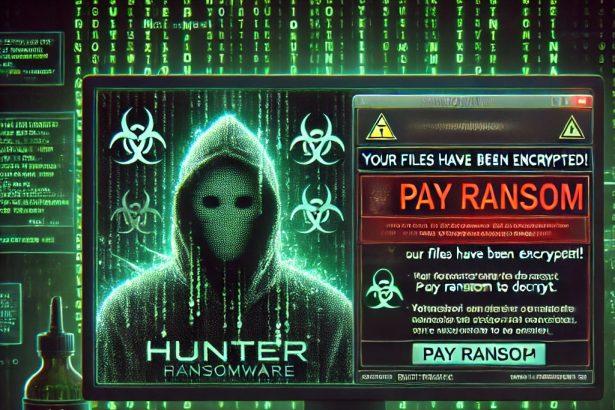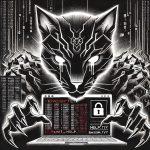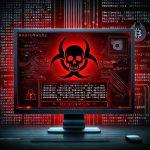The ELDER (Beast) ransomware is a newly identified strain built upon the notorious Beast ransomware family. It was recently discovered in VirusTotal submissions and is already making headlines for its aggressive data encryption methods and harsh ransom demands. Like other ransomware infections, ELDER (Beast) encrypts a victim’s files and demands a payment in exchange for a decryption key. However, what sets it apart is its unique file extension and the threat of data exfiltration.
Upon execution, ELDER (Beast) encrypts documents, databases, images, and other critical files on the infected system. Encrypted files are renamed with a complex suffix: .{random_string}.ELDER. For example, a file named 1.jpg becomes 1.jpg.{0F0DAF43-57AA-E437-0715-AC2B93C0CBA3}.ELDER. After this encryption is completed, a ransom note titled README.txt is created in affected directories.
Summary: ELDER (Beast) Ransomware
| Attribute | Details |
|---|---|
| Threat Type | Ransomware, Crypto Virus, File Locker |
| Encrypted File Extension | .{random_string}.ELDER |
| Ransom Note File Name | README.txt |
| Contact Emails | pbs@criptext.com, pbs24h@tutanota.de |
| Detection Names | Avast (Win32:RansomX-gen), ESET (Win32/Filecoder.OOW), Microsoft (FileCoder.ARAE!MTB), Kaspersky (Trojan-Ransom.Win32.Generic), Combo Cleaner (Generic.Ransom.BlackLockbit) |
| Symptoms of Infection | Files are renamed and cannot be opened, ransom note appears, ransom demand |
| Damage | Data encrypted, potential data exfiltration, possible installation of other malware |
| Distribution Methods | Malicious email attachments, torrents, fake software updates, cracks, drive-by downloads |
| Danger Level | High – Risk of permanent data loss and data breach |
Ransom Note Text (README.txt)
YOUR FILES ARE ENCRYPTED
Your files, documents, photos, databases and other important files are encrypted.
You are not able to decrypt it by yourself! The only method of recovering files is to purchase an unique private key.
Only we can give you this key and only we can recover your files.
To be sure we have the decryptor and it works you can send an email: pbs@criptext.com and decrypt one file for free.
But this file should be of not valuable!
Do you really want to restore your files?
Write to email: pbs@criptext.com
Reserved email: pbs24h@tutanota.de
Attention!
* Do not rename encrypted files.
* Do not try to decrypt your data using third party software, it may cause permanent data loss.
* Decryption of your files with the help of third parties may cause increased price (they add their fee to our) or you can become a victim of a scam.
* We have been in your network for a long time. We know everything about your company most of your information has already been downloaded to our server. We recommend you to do not waste your time if you dont wont we start 2nd part.
* You have 24 hours to contact us.
* Otherwise, your data will be sold or made public.The note attempts to pressure victims into compliance by offering to decrypt one non-valuable file for free. More worryingly, it threatens to publish or sell stolen data if the victim does not contact the attackers within 24 hours.
Manual Ransomware Removal Process
Important: Manual removal is recommended only for experienced users, as incorrect actions can lead to data loss or incomplete removal of the ransomware. If unsure, consider the SpyHunter Removal Method for a guided, automated solution.
Step 1: Disconnect from the Internet
- Immediately disable Wi-Fi or unplug the Ethernet cable to prevent the ransomware from communicating with remote servers.
- This can prevent additional encryption or further infections.
Step 2: Boot into Safe Mode
For Windows Users
- Windows 10/11:
- Press Windows + R, type
msconfig, and press Enter. - Under the Boot tab, select Safe boot and check Network.
- Click Apply, then OK, and restart your PC.
- Press Windows + R, type
- Windows 7/8:
- Restart your PC and press F8 repeatedly before Windows starts.
- Select Safe Mode with Networking and press Enter.
For Mac Users
- Restart your Mac and hold the Shift key immediately after the startup chime.
- Release the key when the Apple logo appears.
- Your Mac will boot in Safe Mode.
Step 3: Identify and Terminate Malicious Processes
Windows
- Open Task Manager by pressing Ctrl + Shift + Esc.
- Look for unusual processes consuming high CPU or memory.
- Right-click on the suspicious process and select End Task.
Mac
- Open Activity Monitor (Finder > Applications > Utilities > Activity Monitor).
- Look for unknown or high-resource-consuming processes.
- Select the suspicious process and click Force Quit.
Step 4: Delete Ransomware Files
Windows
- Open File Explorer and navigate to:
C:\Users\[Your Username]\AppData\LocalC:\Users\[Your Username]\AppData\RoamingC:\Windows\System32
- Identify and delete suspicious files (randomly named or recently modified items).
- Clear temporary files:
- Press Windows + R, type
%temp%, and hit Enter. - Delete all files in the Temp folder.
- Press Windows + R, type
Mac
- Open Finder and select Go > Go to Folder.
- Type
~/Library/Application Supportand check for unfamiliar files or folders. - Remove unknown
.plistfiles from~/Library/LaunchAgents.
Step 5: Remove Ransomware Entries from Registry or System Settings
Windows
- Press Windows + R, type
regedit, and hit Enter. - Navigate to:
HKEY_CURRENT_USER\SoftwareHKEY_LOCAL_MACHINE\Software
- Identify and delete ransomware-related registry entries.
Mac
- Open System Preferences > Users & Groups.
- Select the Login Items tab and remove any unknown startup programs.
- Check
~/Library/Preferencesfor malicious settings.
Step 6: Restore System Using a Backup or Restore Point
Windows
- Press Windows + R, type
rstrui, and press Enter. - Choose a restore point from before the infection and proceed.
Mac
- Restart your Mac and enter macOS Utilities by holding Command + R.
- Select Restore from Time Machine Backup and restore a safe backup.
Step 7: Attempt to Decrypt Files
- Check No More Ransom (www.nomoreransom.org) for available decryption tools.
- If unavailable, restore files from backups.
Automated Ransomware Removal with SpyHunter
If manual removal is too complex or risky, SpyHunter offers a safer, automated method for detecting and removing ransomware.
Step 1: Download SpyHunter
- Get SpyHunter from the official Enigma Software website.
Step 2: Install SpyHunter
- Open the downloaded file (
SpyHunter-Installer.exeor.dmgfor Mac users). - Follow the installation prompts.
- Launch SpyHunter upon completion.
Step 3: Run a Full System Scan
- Click Start Scan Now to detect malware and ransomware.
- Wait for the scan to complete and review detected threats.
Step 4: Remove Detected Ransomware
- Click Fix Threats to remove identified ransomware components.
- SpyHunter will clean your system automatically.
Step 5: SpyHunter’s Custom Malware HelpDesk
- If ransomware persists, use SpyHunter’s Malware HelpDesk for custom malware fixes.
Step 6: Restore Files
- Use backups stored on external drives or cloud storage.
- If no backup is available, check No More Ransom for decryption tools.
Preventing Future Ransomware Attacks
- Keep backups: Use cloud storage or an external hard drive.
- Install a reliable security tool: SpyHunter offers real-time protection against malware.
- Enable Windows Defender or Mac security features for additional protection.
- Avoid phishing emails and unknown attachments.
- Regularly update Windows, macOS, and installed applications.
Conclusion
ELDER (Beast) ransomware poses a serious threat to individuals and organizations alike. Its file encryption capabilities, paired with the possibility of data theft, make it particularly dangerous. Victims are warned not to rename encrypted files or attempt decryption using third-party tools, as this may permanently damage their data.
While a decryptor is currently unavailable and paying the ransom is highly discouraged, organizations are urged to bolster cybersecurity practices and ensure they maintain secure backups. If your system is already infected, do not delay taking action.




